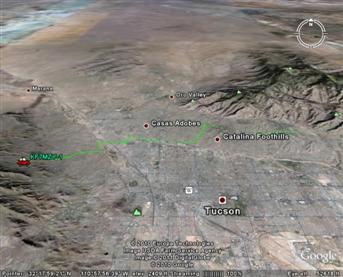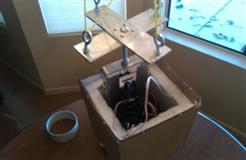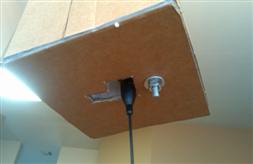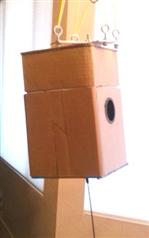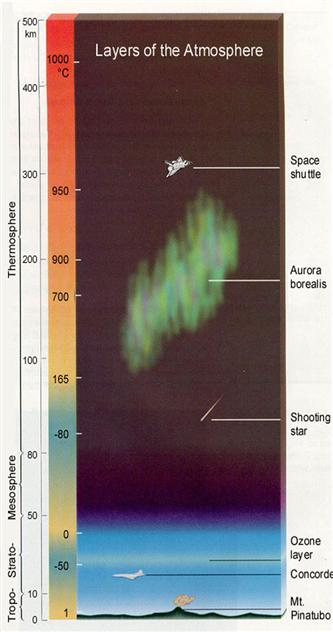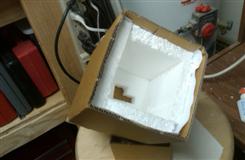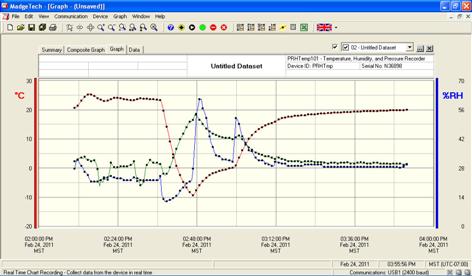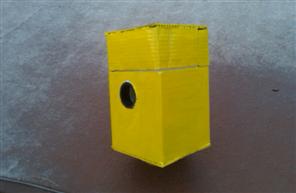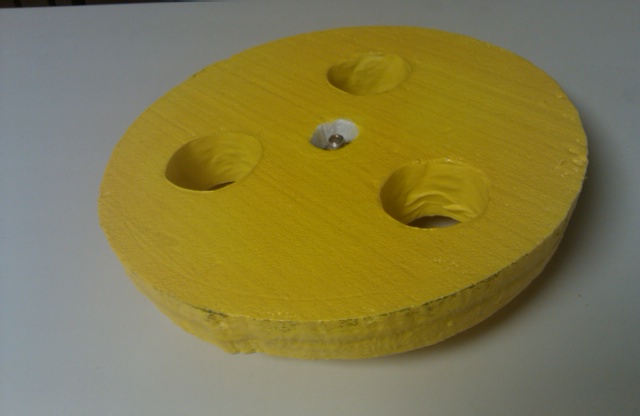The High Altitude Balloon Experiment (HABE) will be conducted during the Spring 2011 semester. The goal of this project is to launch a probe to an altitude of 20 miles...into near space, the stratosphere. As it rises data loggers will collect atmospheric data. The onboard video camera will record the ascent and look back at the Earth from that altitude. The probe will be tracked using an on board GPS and APRS link.
There will be 5 tethered launches from campus. Students will be able to check the operation of all the systems before the HABE launch.
Nov - Dec 2010
Ongoing discussion with the FAA to allow 1000 foot ceiling for the tethered test balloons from the Observatory. This is needed because the tethered area is within 5 miles of the DMAFB airspace. Looks like I will have to apply for an exception. In the meantime the tethered test balloons will be flown from the Observatory to an altitude less that the highest structures near the Observatory.
16 Dec 2010
Equipment is being purchased.
23 Jan 2011
Wiring of DP-9 socket and programming of the APRS transmitted completed. A plastic box was fabricated to house the unit for testing purposes. The first test of the APRS GPS enabled tracker was conducted today. The Micro-Trak 300 mw transmitter was connected to a 1/4 wave mobile vertical antenna with a 9 v battery for a power supply. The car was driven across Tucson while the APRS transmitted every 20 seconds but received at various repeaters on average of every 39 second. The test was a success. Transmitter identified as KF7MZY-1.
Google Maps APRS surface track in green....
H.A.B.E.
(High Altitude Balloon Experiment)
14 Feb 2011
The helium tank mounting bracket has been installed in the Observatory...waiting on the tank to be moved.
16 Feb 2011
The chassis with the subsystems and suspension system have been completed and can be seen in the short video.
20 Feb 2011 Construction of Insulated Shell aka The Bird House
The insulated shell construction is progressing. Here are several images of the inner core of styrofoam covered with an outer skin of cardboard. This construction technique will allow for a strong yet light, highly insulated container in which the chassis, subsystems and batteries will be located...this I learned from my model rocket flying days! Also seen is the camera port and subsystems installed in the bottom portion of the Bird House.
The weight of the Bird House with all batteries and subsystems is 32.3 oz. This meets the design target weight. The balloon and volume of helium will be selected to result in an ascend rate of at least 1000 feet per minute.
Unsealed Bird House with all subsystems in place without
foil skin. This is the test configuration for the low altitude campus test.
24 Feb 2011 Data Logger Test
A two hour test of the data logger was conducted and the data plotted. The unit functioned flawlessly. The temperature was cycled from 25 C to -10 C. Data logger is now flight ready.
26 Feb 2011
Completed the video streaming and tracking webpage.
Conducted ground level APRS tracker test with stock antenna and 9 volt battery power supply. APRS tracker is now flight ready.
The yellow painted surface seals the Bird House from moisture.
27 Feb 2011
Completed video camera recording resolution test and video camera battery endurance test. A 2 hour endurance is easily reached. See short video clip above for simple contrast, resolution and motion test. Video camera is now flight ready.
4 Mar 2011
I installed the helium tank in the Observatory workroom. I will now be building the tube and nozzle filler. The first tethered launch will probably occur after spring break. A 100 gram balloon will be used and one or two subsystems will be tested at a time.
Click on any image to see a larger version.
2 Apr 2011
The video transmitter antenna placed inside its protective shell and an image of the video transmitter.
Completed antenna and shell.
31 May 2011
Determining the free lift of a high altitude helium balloon is
seen in the frame on the right. You may have noticed me at
the observatory today conducting the test and hearing the
balloon pop!
11 Sept 2011
Just received word that the launch date for the HABE will be changed to Saturday 8 October 2011. Conditions weren't right for a 17 Sept launch. The payload will be hitching a ride on ANSR Flight 64. We will be testing systems on that flight and there was room for another payload...so up up and away!!!
7 Oct 2011
These are the payload components for my High Altitude Balloon Experiment (HABE) that will be launched as part of the ANSR Flight 64. Included in the payload will be 2 HD cameras, one recording HD video the othe HD still images taken at 5 second intervals. There is also a 3 axis accelerometer and temperature, humidity and pressure data logger. Flight is scheduled for Saturday, 8 Oct 2011. Finally!
9 Oct 2011
The culmination of a project that included almost one year of design, planning and building occurred on 8 Oct 2011 when my High Altitude Balloon Experiment was launched. The Professional Development program at Pima College East Campus supported, in part, this experiment.The HABE payload was part of ANSR Flight 64, a flight to test equipment and techniques used with the various student and teacher NASA sponsored AZ Space Grant launches during the year. All equipment on the HABE payload worked flawlessly and the images and video taken were fantastic. The video at right shows highlights of the flight. It was a great experiment!
